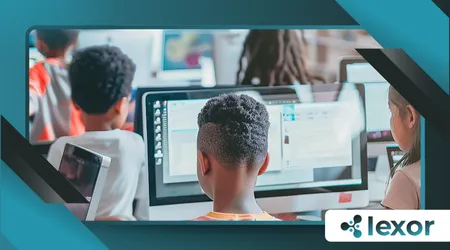Digital Literacy: Essential Skills for Modern Kids

In today’s hyper-connected world, digital literacy is no longer a luxury—it’s a necessity.
For modern kids, mastering this skill set is as crucial as learning to read or write.
But what exactly does it mean to be digitally literate?
It’s not just about knowing how to swipe on a tablet or play a video game.
True digital literacy involves critical thinking, ethical decision-making, and the ability to navigate an increasingly complex digital landscape.
As technology evolves at breakneck speed, children are exposed to a flood of information, tools, and platforms.
Without the right skills, they risk falling behind or, worse, becoming vulnerable to online threats.
This article explores why digital literacy is essential for kids, the core skills they need, and how parents and educators can foster these abilities effectively.
Why Digital Literacy Matters More Than Ever
The digital age has transformed how we live, learn, and communicate.
According to a 2023 report by Common Sense Media, 95% of U.S. teens have access to a smartphone, and 45% say they are online “almost constantly.”
These statistics highlight the pervasive role of technology in young lives.
However, access alone isn’t enough.
Without digital literacy, kids may struggle to discern credible information from misinformation, protect their privacy, or use technology responsibly.
Consider this: the internet is a double-edged sword.
On one hand, it offers endless opportunities for learning and creativity.
On the other, it poses risks like cyberbullying, data breaches, and exposure to inappropriate content.
Teaching kids to navigate this terrain safely and effectively is the cornerstone of digital literacy.
Moreover, the ability to critically assess online content is increasingly vital.
As misinformation spreads rapidly, kids must develop the skills to identify reliable sources and understand the implications of sharing unverified information.
This not only protects them but also contributes to a more informed society.
+ STEM Education: Transforming Elementary Schools with Technology
The Pillars of Digital Literacy for Kids
To thrive in the digital world, children need a well-rounded skill set.
Let’s break it down into four key pillars:
1. Critical Thinking and Evaluation
In an era of fake news and viral misinformation, kids must learn to question what they see online.
Critical thinking involves analyzing sources, verifying facts, and understanding biases.
For example, a child should know how to distinguish between a reputable news site and a clickbait article.
Encouraging discussions about current events can help children practice these skills.
By evaluating different perspectives, they learn to appreciate the complexity of information and develop a more nuanced understanding of the world.
2. Online Safety and Privacy
Cybersecurity isn’t just for IT professionals.
Kids need to understand the basics of protecting their personal information, recognizing phishing attempts, and creating strong passwords.
A study by Pew Research Center found that 60% of teens have experienced some form of cyberbullying, underscoring the importance of teaching online safety.
Teaching kids about privacy settings on social media platforms is also essential.
Understanding how to manage their digital footprints can empower them to take control of their online presence.
3. Digital Communication and Collaboration
From email etiquette to video conferencing, effective communication is a vital skill.
Kids should also learn how to collaborate on digital platforms, whether for school projects or future careers.
Tools like Google Workspace and Microsoft Teams are becoming staples in both education and the workplace.
Encouraging students to participate in online discussions can enhance their communication skills.
This practice not only boosts their confidence but also prepares them for collaborative work environments in the future.
4. Creativity and Problem-Solving
Technology isn’t just for consumption—it’s for creation.
Coding, graphic design, and video editing are just a few examples of how kids can use digital tools to express themselves and solve problems.
Platforms like Scratch and Canva make these skills accessible even to beginners.
Encouraging kids to engage in creative projects can foster innovation.
By allowing them to experiment with different mediums, they learn to think outside the box and develop resilience in problem-solving.

How to Foster Digital Literacy at Home and School
Building digital literacy requires a collaborative effort between parents, educators, and the kids themselves.
Here are some actionable strategies:
For Parents:
- Model Good Behavior: Kids often mimic their parents.
Show them how to use technology responsibly by limiting screen time, avoiding multitasking, and practicing good online etiquette.
- Encourage Exploration: Provide access to educational apps, coding games, and creative tools.
Let them experiment and learn through trial and error.
- Have Open Conversations: Discuss online risks and responsibilities openly.
Make sure your child feels comfortable coming to you with questions or concerns.
Additionally, sharing your own experiences with technology can help them relate and learn from your insights.
Creating a safe space for dialogue encourages kids to express their thoughts and worries about the digital world.
For Educators:
- Integrate Technology into Lessons: Use digital tools to enhance traditional teaching methods.
For example, interactive quizzes or virtual field trips can make learning more engaging.
- Teach Digital Citizenship: Incorporate lessons on online ethics, privacy, and safety into the curriculum.
Programs like Common Sense Education offer free resources for schools.
- Promote Collaboration: Encourage group projects that require digital communication and teamwork.
This prepares students for the modern workplace.
Moreover, fostering a culture of collaboration can lead to improved social skills and a sense of community among students.
Encouraging peer feedback during projects can also enhance their learning experience.
The Role of Schools in Bridging the Digital Divide
While many kids have access to technology, not all do.
The digital divide—the gap between those with and without access to digital tools—remains a significant challenge.
Schools play a crucial role in leveling the playing field.
For instance, initiatives like One Laptop per Child aim to provide affordable devices to underserved communities.
Similarly, schools can offer after-school programs or tech clubs to ensure all students have the opportunity to develop digital literacy skills.
Furthermore, partnerships with local organizations can help provide resources and training for both students and their families.
By fostering community engagement, schools can create a supportive environment that promotes digital literacy for everyone.
The Future of Digital Literacy
As artificial intelligence, virtual reality, and other emerging technologies become mainstream, the definition of digital literacy will continue to evolve.
Kids will need to adapt to new tools and platforms, making lifelong learning a key component of their education.
Moreover, the demand for digitally literate workers is skyrocketing.
According to the World Economic Forum, 50% of all employees will need reskilling by 2025 as technology adoption accelerates.
By equipping kids with digital literacy skills today, we’re preparing them for the jobs of tomorrow.
This preparation goes beyond technical skills; it also includes fostering adaptability and resilience in the face of rapid change.
As the job market evolves, so will the skill sets required, making it essential for kids to be proactive learners.
++ Virtual Learning Tools: Supporting Remote Education

Tables: Breaking Down Digital Literacy Skills
Table 1: Core Digital Literacy Skills
| Skill | Description | Example |
|---|---|---|
| Critical Thinking | Evaluating online information | Fact-checking a news article |
| Online Safety | Protecting personal data | Creating a strong password |
| Digital Communication | Using tools like email and video calls | Writing a professional email |
| Creativity | Using digital tools to create content | Designing a poster on Canva |
Table 2: Tools to Build Digital Literacy
| Tool | Purpose | Age Group |
|---|---|---|
| Scratch | Learning to code through games | 8-16 |
| Google Classroom | Managing school assignments online | 10+ |
| Khan Academy | Accessing free educational resources | All ages |
| Duolingo | Learning new languages | All ages |
Final Thoughts
Digital literacy is the passport to the future.
For modern kids, it’s not just about using technology—it’s about using it wisely, ethically, and effectively.
By fostering these skills early, we empower the next generation to navigate the digital world with confidence and creativity.
The journey to digital literacy is ongoing, but with the right support, every child can thrive in the digital age.
Let’s equip them with the tools they need to succeed—because the future belongs to those who can adapt, innovate, and lead in a tech-driven world.
As we move forward, it’s crucial to continue evolving our approach to digital literacy, ensuring it remains relevant in an ever-changing landscape.
Together, we can create a generation of informed, responsible, and innovative digital citizens.
